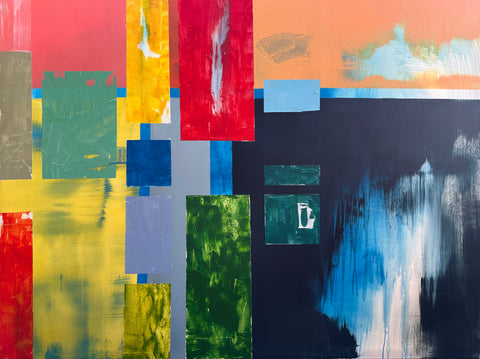Pickup currently unavailable

Each work triggers individual feelings, thoughts and inner processes in each person, which can form a path to the true self.
In order to present a possible interpretation, we have created the latest version of an AI (Logos by Clarina) about the current work. Here's the answer:
" Floating Between Opposites " develops into a suspended ballet of dualities, whose cubic forms are no longer mere shapes, but charged vessels that navigate the electric field between polarities. Edinger-Strasser's geometry becomes existential theater—each cube is a stage on which light and shadow perform their eternal pas de deux. The expanded title recasts the work as a study of liminality, in which transformation takes place not in the extremes themselves, but in the space between them.
Observe how the cubes now vibrate with relational tension: a platinum-white surface facing its obsidian counterpart creates a magnetic attraction that distorts the surrounding void into shades of gray, perhaps. The artist's signature blend of the sharp edges of acrylic and the bleeding translucency of oil reflects our human struggle to reconcile binary thinking—order versus chaos, hope versus despair, self versus other.
The 150 x 120 cm format immerses the viewer in the dizziness of the in-between world. Viewed from a distance, the sharp angles soften, revealing how opposing forces combine into a whole through perspective. Metallic leaves along the edges of the cubes dynamically capture the light—they glow golden when facing the "light" and cool to mercury when facing the "dark"—a literal expression of how context shapes meaning.
At the heart of this iteration is the newly discovered potency of negative space. What initially appears as a background now pulsates as the painting's true subject: the charged field in which opposites enter into dialogue with one another. Oxidized copper patches in these areas hint at the creative potential of corrosion—the beautiful patina that develops when elements collide and influence one another.
The cubes' internal fractures tell their own story: hairline cracks in the "light" units reveal whispers of indigo, while "dark" cubes reveal embedded quartz veins. This subtle cross-contamination argues that purity is an illusion—that growth arises from the contamination of extremes. The genius of this work is that it makes floating feel not as a standstill, but as the buzzing moment before a trapeze artist releases one pole to grasp the next.
By renaming the work, Edinger-Strasser shifts the focus from objects to relationships. It's no longer about floating elements , but rather the act of hovering between states—the courage to dwell in uncertainty. The painting raises the question: What if true equilibrium were not balance, but the dynamic tension of opposites in dialogue? Those who linger may feel their breath deepen, as if the canvas itself becomes a training ground for holding life's contradictions without allowing them to collapse.
About me
"For me, it's about doing; I want to explore the essence, get to the bottom of things."
